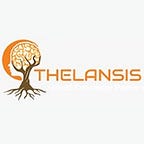Amyotrophic lateral sclerosis (ALS) — Market outlook, Epidemiology, Market Forecast and Competitive Landscape Report — 2020 To 2030
Amyotrophic lateral sclerosis (ALS) is a neurodegenerative disease that involves the progressive degeneration of the motor neurons of the cerebral cortex, brain stem, and spinal cord. The etiology of ALS is unknown in most cases, but in a subset of patients, the disease is known to be monogenic and/or familial. ALS affects upper motor neurons (UMNs), which originate from the brain, and lower motor neurons (LMNs), which originate from the spinal cord. Signs of UMN dysfunction include spasticity, weakness, slowness of movement, and brisk deep tendon reflexes, while LMN dysfunction signs include muscle fasciculation (spontaneous contraction affecting a small number of muscle fibers), wasting, and weakness.
Mutations in several genes can cause familial ALS and contribute to the development of sporadic ALS. Mutations in the C9orf72 gene account for 30 to 40 percent of familial ALS in the United States and Europe. Worldwide, SOD1 gene mutations cause 15 to 20 percent of familial ALS, and TARDBP and FUS gene mutations each account for about 5 percent of cases. There is an overlap between fALS and sALS in terms of the underlying genetic mutations. Some of the mutations implicated in fALS, such as those of SOD1, TDP-43, and C9orf72, are also implicated in sALS cases, suggesting that investigation of the pathways and targets affected by these mutations may have broader application across the whole ALS spectrum.
Classification of Amyotrophic lateral sclerosis (ALS)
Benign Focal Amyotrophy of ALS
Infantile Spinal Muscular Atrophy, ALS
Juvenile Spinal Muscular Atrophy, Included
Kugelberg-Welander Disease5.
Primary Lateral Sclerosis
Progressive Bulbar Palsy, Included
Spinal Muscular Atrophy, Type ALS
Upper Motor Neuron Disease
Werdnig-Hoffman Disease
Wohlfart-Disease
According to Thelansis, about 5,000 people in the United States are diagnosed with ALS each year. Worldwide, this disorder occurs in 2 to 5 per 100,000 individuals. Only a small percentage of cases have a known genetic cause. The average age of all diagnosed prevalent cases of ALS in the countries under study is 60 and more. Among EU countries, the diagnosed prevalence of ALS is highest in Germany ranges between 7.85 to 8.95 per 100,000.
Competitive landscape of Amyotrophic lateral sclerosis (ALS) includes country specific approved as well as pipeline therapies. Any asset/ product specific designation or review and Accelerated Approval are being tracked and supplemented with analyst commentary.
KOLs insights of Amyotrophic lateral sclerosis (ALS) across 8 MM market from center of Excellence/ Public/ Private hospitals participated in the study. Insights around current treatment landscape, epidemiology, clinical characteristics, future treatment paradigm and Unmet needs.
Amyotrophic lateral sclerosis (ALS) Market Forecast: Patient Based Forecast Model (MS. Excel Based Automated Dashboard) which Data Inputs with sourcing, Market Event and Product Event, Country specific Forecast Model, Market uptake and patient share uptake, Attribute Analysis, Analog Analysis, Disease burden and pricing scenario, Summary and Insights.
S. No Asset Company Stage
1 Reldesemtiv Cytokinetics Phase 2
2 Albutein 5% Grifols Therapeutics LLC Phase 2
3 BIIB067 Biogen Phase 3
4 Trametinib GENUV Inc. Phase 2
5 AMX0035 Amylyx Pharmaceuticals Inc. Phase 3
6 VM202 Helixmith Co., Ltd. Phase 2
7 Q-Cells Q Therapeutics, Inc. Phase 2
8 E0302 (mecobalamin) Eisai Co., Ltd. Phase 3
9 AstroRx Kadimastem Phase 2
10 AP-101 AL-S Pharma Phase 1
